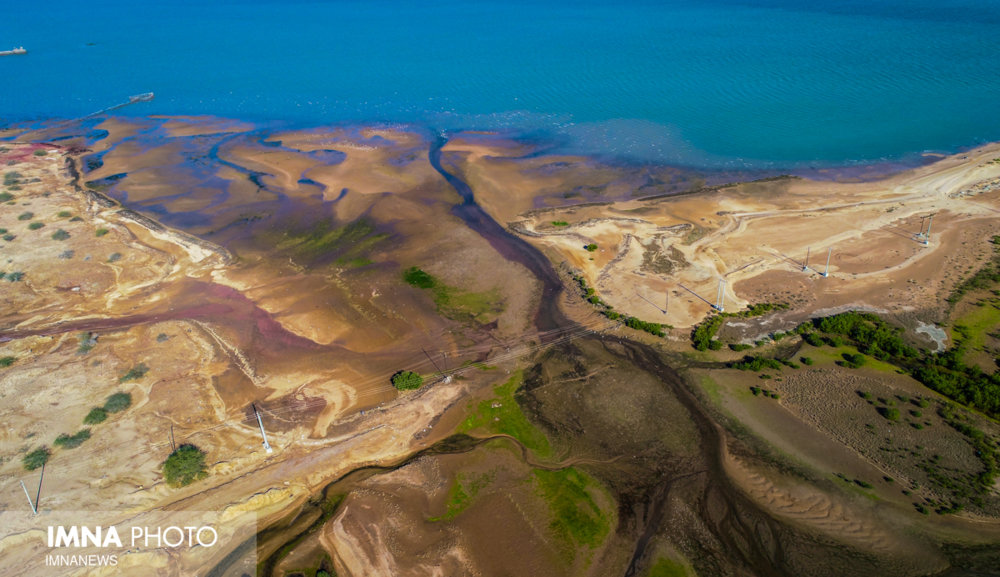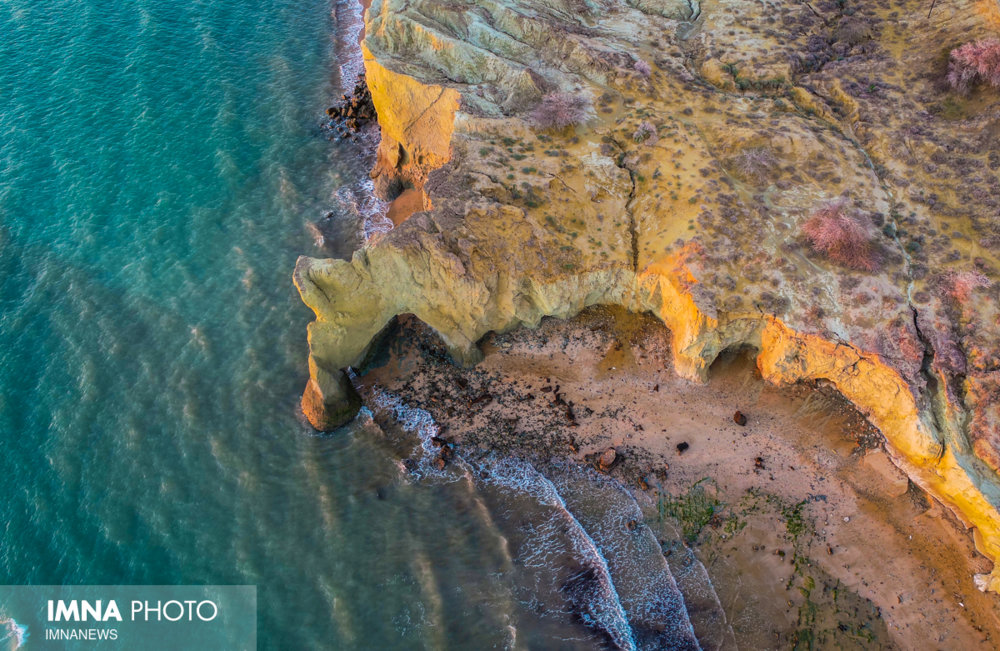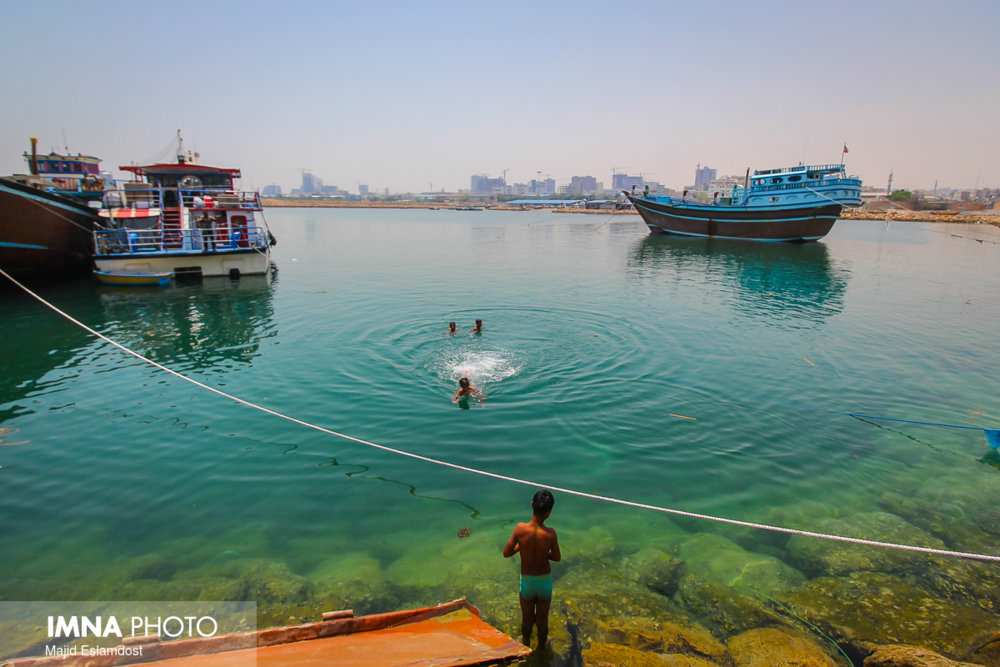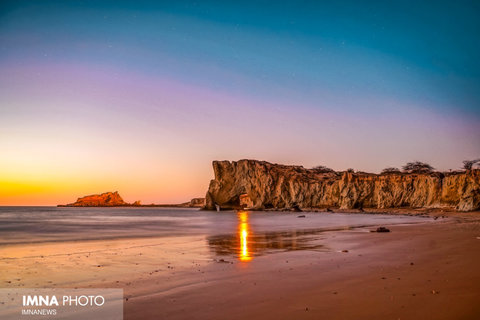Iran (IMNA) - It is bordered on the north, northeast, and east by Iran; on the southeast and south by part of Oman and by the United Arab Emirates; on the southwest and west by Qatar, Bahrain, and Saudi Arabia; and on the northwest by Kuwait and Iraq.
Physiography
The Iranian shore is mountainous, and there often are cliffs; elsewhere a narrow coastal plain with beaches, intertidal flats, and small estuaries borders the gulf. The coastal plain widens north of Būshehr (Bushire), Iran, and passes into the broad deltaic plain of the Tigris and Euphrates and Kārūn rivers.

Cliffs are rare on the Arabian shore of the gulf, except around the base of the Qatar Peninsula and in the extreme southeast around the Strait of Hormuz, where they form the spectacular coast of the Musandam Peninsula. Most of the Arabian shore is bordered by sandy beaches, with many small islands enclosing small lagoons.The gulf is shallow, rarely deeper than about 300 feet (90 metres), although depths exceeding 360 feet (110 metres) are found at its entrance and at isolated localities in its southeastern part. It is noticeably asymmetrical in profile, with the deepest water occurring along the Iranian coast and a broad shallow area, which is usually less than 120 feet (35 metres) deep, along the Arabian coast. There are numerous islands, some of which are salt plugs or domes and others merely accumulations of coral and skeletal debris.
The Persian Gulf receives only small amounts of river-borne sediment except in the northwest, where immense quantities of silt are deposited by the Tigris, Euphrates, and Kārūn rivers and other smaller streams as they empty into the gulf, by way of the Shatt Al-’Arab. The rivers reach their peak flow in spring and early summer, when the snow melts in the mountains; disastrous floods sometimes result. There are some ephemeral streams on the Iranian coast south of Būshehr, but virtually no fresh water flows into the gulf on its Arabian side. Large quantities of fine dust and, in places, quartz sand, however, are blown into the sea by predominant northwest winds from the desert areas of the surrounding lands. Biological, biochemical, and chemical processes lead to the production of considerable calcium carbonate in the form of skeletal debris and fine mud, which mixes with this land-derived detritus.

The deeper parts of the Persian Gulf adjacent to the Iranian coast and the area around the Tigris-Euphrates delta are mainly floored with gray-green muds rich in calcium carbonate. The shallower areas to the southwest are covered with whitish gray or speckled skeletal sands and fine carbonate muds. Often the seafloor has been hardened and turned to rock by the deposition of calcium carbonate from the warm, salty waters. Chemical precipitation is abundant in the coastal waters, and sands and muds are produced that mix with the skeletal debris of the local sea life. These sediments are thrown up by the waves to form coastal islands that enclose lagoons. The high salinities and temperatures result in the precipitation of calcium sulfate and sodium chloride to form extensive coastal salt flats (sebkhas).
Biological and mineral resources
The waters of the area support many plants and animals, but the high temperatures and salinities lead to a diminution in the variety of flora and fauna typical of the Indian Ocean. Until the discovery of oil in Iran in 1908, the Persian Gulf area was important mainly for fishing, pearling, the building of dhows (lateen-rigged boats common in the region), sailcloth making, camel breeding, the making of reed mats, date growing, and the production of other minor products, such as red ochre from the islands in the south. The arid lands surrounding the gulf produced little else and, except for the rich alluvial lands of the Mesopotamian plain, supported only a small population of those engaged in fishing, date growing, and nomadic herding. Fishing has become highly commercialized. The traditional pearl-fishing industry has declined since the advent of Japanese cultivated pearls on world markets in the 1930s. Large fishing industries have been set up in Kuwait, Qatar, and Bahrain, and some countries have become exporters of fish. Yields in the northwest have been affected, however, by the construction of large dams on the rivers, which restrict the supply of nutrients into the gulf.

The Britannica


Your Comment